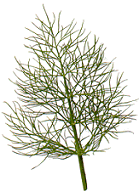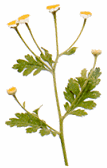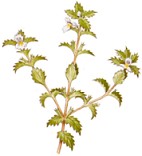Fennel, feverfew and eyebright tinctures have been used for centuries
These three herbs have been very popular in recent times and they are available individually.
Each of the herbs has its own specific uses and we have produced these food supplements to the highest quality available.
We usually recommend using these throughout the day for best results. Ideally about 10 to 15 drops at breakfast, then lunch and then dinner. Here is some more information:
Here is some information about Fennel

Studies show that fennel has compounds that act like the female hormone oestrogen. These say that it helps to stabilise hormone activity during menopause and has been used for centuries to promote milk flow in nursing mothers. But it should be avoided during pregnancy.
Fennel is anti-inflammatory, and is often used in treating inflammation of the eyes or mouth. It also makes a good mouthwash for gum disease.
Information and uses for Feverfew herb

Feverfew has maintained a reputation for treating indigestion, sleeplessness and headaches. It also reduces and helps prevent fevers, dilates the blood vessels, relieves pain, kills and helps expel worms and stimulates the stomach.
Feverfew has insecticidal properties. Dabbed on the skin a solution of feverfew is said to be an effective insect repellent, and relieves painful bites and stings.
Eyebright - Here's some information about this interesting herb

traditional favourite
It is used in homeopathy for the treatment of Hay fever, watery irritated eyes and nasal discharge. Eyebright is an anti-inflammatory and astringent*. It is soothing and antibacterial and has numerous other uses.
*astringent - causing contraction of the body tissues, checking blood flow, or restricting secretions of fluids.

